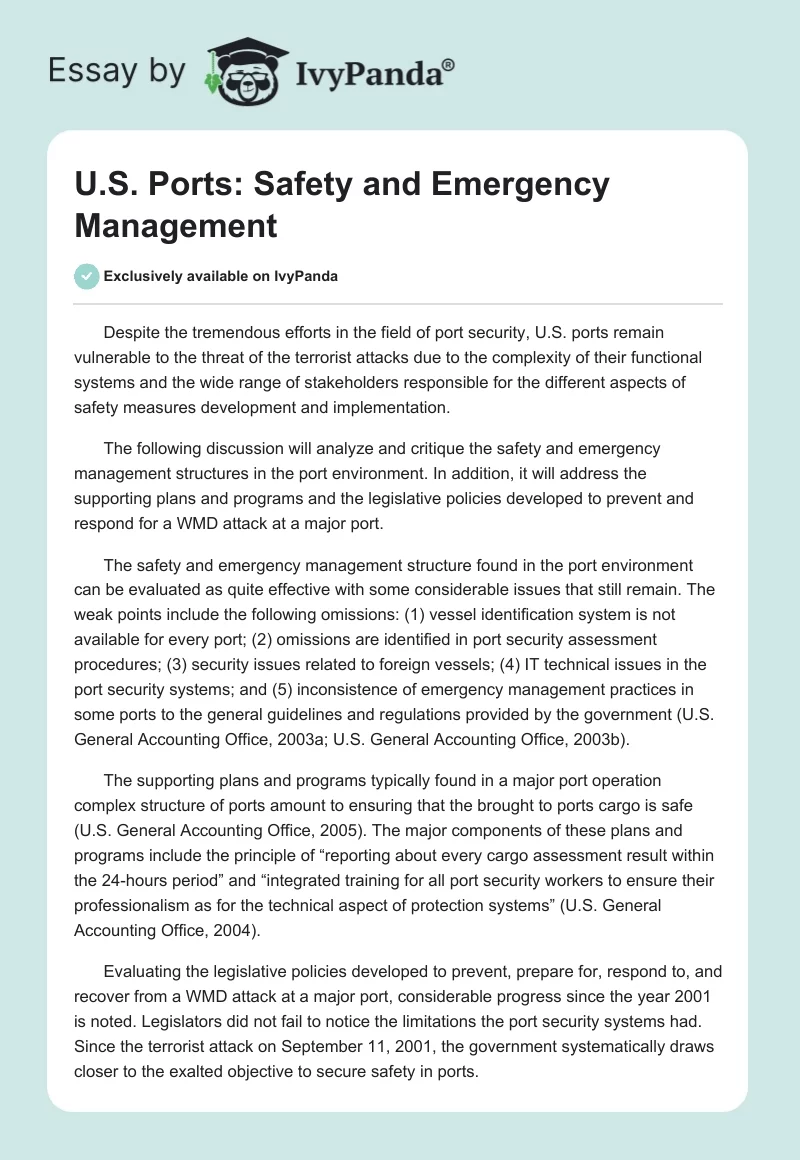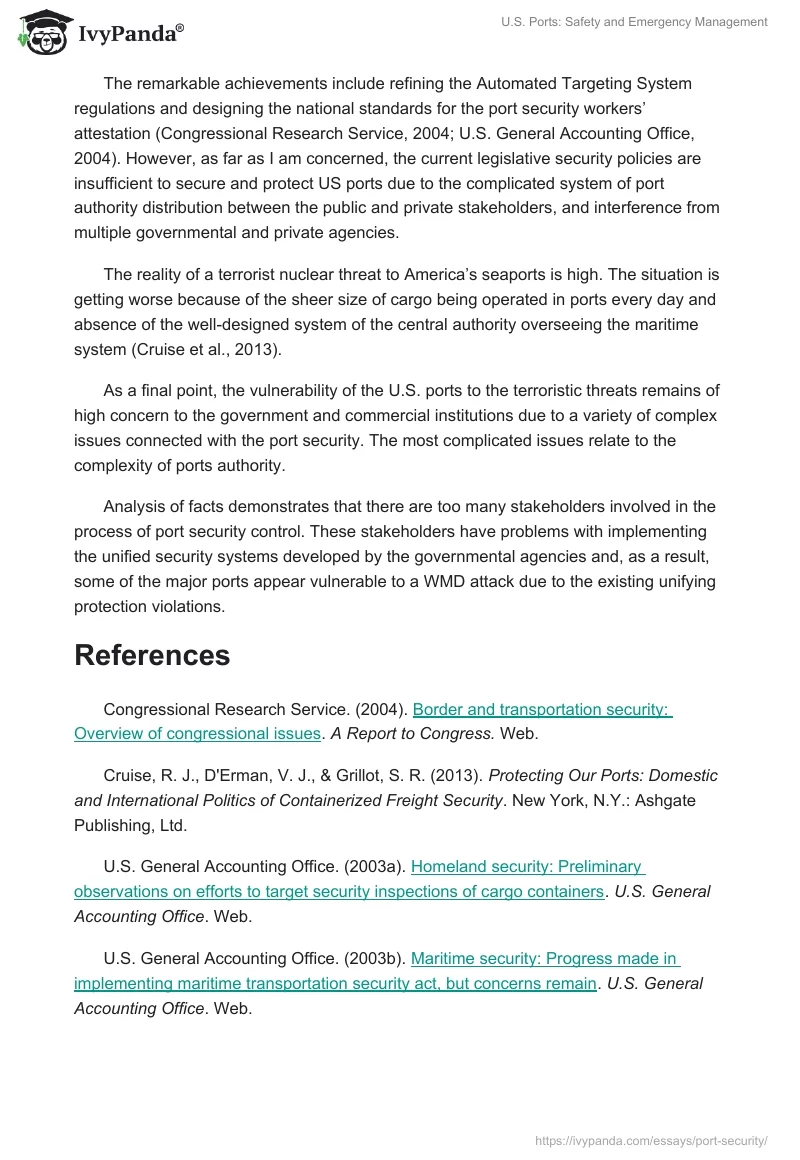Despite the tremendous efforts in the field of port security, U.S. ports remain vulnerable to the threat of the terrorist attacks due to the complexity of their functional systems and the wide range of stakeholders responsible for the different aspects of safety measures development and implementation.
The following discussion will analyze and critique the safety and emergency management structures in the port environment. In addition, it will address the supporting plans and programs and the legislative policies developed to prevent and respond for a WMD attack at a major port.
The safety and emergency management structure found in the port environment can be evaluated as quite effective with some considerable issues that still remain. The weak points include the following omissions: (1) vessel identification system is not available for every port; (2) omissions are identified in port security assessment procedures; (3) security issues related to foreign vessels; (4) IT technical issues in the port security systems; and (5) inconsistence of emergency management practices in some ports to the general guidelines and regulations provided by the government (U.S. General Accounting Office, 2003a; U.S. General Accounting Office, 2003b).
The supporting plans and programs typically found in a major port operation complex structure of ports amount to ensuring that the brought to ports cargo is safe (U.S. General Accounting Office, 2005). The major components of these plans and programs include the principle of “reporting about every cargo assessment result within the 24-hours period” and “integrated training for all port security workers to ensure their professionalism as for the technical aspect of protection systems” (U.S. General Accounting Office, 2004).
Evaluating the legislative policies developed to prevent, prepare for, respond to, and recover from a WMD attack at a major port, considerable progress since the year 2001 is noted. Legislators did not fail to notice the limitations the port security systems had. Since the terrorist attack on September 11, 2001, the government systematically draws closer to the exalted objective to secure safety in ports.
The remarkable achievements include refining the Automated Targeting System regulations and designing the national standards for the port security workers’ attestation (Congressional Research Service, 2004; U.S. General Accounting Office, 2004). However, as far as I am concerned, the current legislative security policies are insufficient to secure and protect US ports due to the complicated system of port authority distribution between the public and private stakeholders, and interference from multiple governmental and private agencies.
The reality of a terrorist nuclear threat to America’s seaports is high. The situation is getting worse because of the sheer size of cargo being operated in ports every day and absence of the well-designed system of the central authority overseeing the maritime system (Cruise et al., 2013).
As a final point, the vulnerability of the U.S. ports to the terroristic threats remains of high concern to the government and commercial institutions due to a variety of complex issues connected with the port security. The most complicated issues relate to the complexity of ports authority.
Analysis of facts demonstrates that there are too many stakeholders involved in the process of port security control. These stakeholders have problems with implementing the unified security systems developed by the governmental agencies and, as a result, some of the major ports appear vulnerable to a WMD attack due to the existing unifying protection violations.
References
Congressional Research Service. (2004). Border and transportation security: Overview of congressional issues. A Report to Congress. Web.
Cruise, R. J., D’Erman, V. J., & Grillot, S. R. (2013). Protecting Our Ports: Domestic and International Politics of Containerized Freight Security. New York, N.Y.: Ashgate Publishing, Ltd.
U.S. General Accounting Office. (2003a). Homeland security: Preliminary observations on efforts to target security inspections of cargo containers. U.S. General Accounting Office. Web.
U.S. General Accounting Office. (2003b). Maritime security: Progress made in implementing maritime transportation security act, but concerns remain. U.S. General Accounting Office. Web.
U.S. General Accounting Office. (2004). Homeland security: Summary of challenges faced in targeting ocean-going cargo containers for inspection. U.S. General Accounting Office. Web.
U.S. General Accounting Office. (2005). Homeland security: Process for reporting lessons learned from seaport exercises needs further attention. U.S. Government Accountability Office. Web.


